Gregory Targhee 32 Backpack
Test Location: Crested Butte, Colorado
Days Used: 50+
Size Tested: Medium
Reviewer: 5’8”, 155 lbs
Stated Volume: 32 Liters / 1953 cubic inches
Blister’s Measured Weight: 1262 grams
Stated Features:
- Anodized Aluminum hardware for easy, durable use in the cold.
- VertFlex suspension with anti-barreling cross-stay for support with torsional flexibility.
- U-Zip backpanel access with compression molded, snow-shedding backpanel design.
- Padded shoulder straps with insulated hydration sleeve and sternum strap with integrated safety whistle.
- Hipbelt is shaped to work with a harness and includes a zippered pocket and gear loop with ice clipper attachment points.
- Bottom reinforced loops for A-Frame ski/splitboard carry.
- Front straps with aluminum hooks can be configured for diagonal carry or vertical snowshoe/snowboard carry.
- Internal hydration sleeve with hose routing loops, universal reservoir hanger, and hydration port.
- Lightweight, durable bungee ice tool system with Aluminum toggles and pick sleeve.
- Large, zippered top pocket with an internal zippered security pocket and key clip.
- Deployable helmet carry system in a front zippered compartment.
- Front zippered pocket with sleeves for a probe, shovel handle, and shovel blade.
- Dual layered bottom panel for durability and tubular webbing reinforced haul handle.
- Side compression with cam-locking buckles for secure ski-carry.
- Custom comfort-grip molded zipper pulls and glove-friendly hardware.
MSRP: $189.95
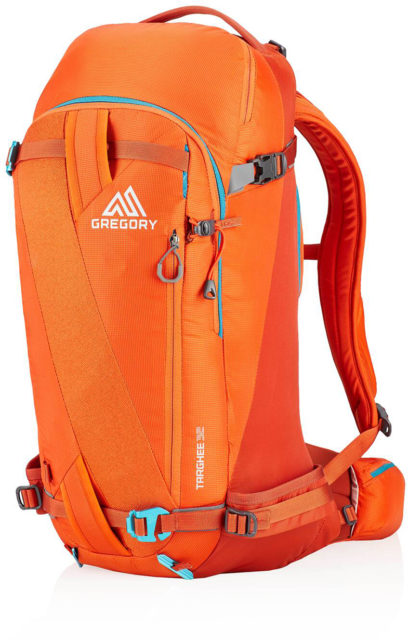
Intro
I’m always on the search for the ideal ski pack, like many people out there. If you’re looking right now, the current market varies a lot, from sleek, low-volume bags great for the resort to super minimal, skimo-oriented options, to burly, high-volume packs for multi-day trips. The goals across the board are pretty similar though: carry the gear you need, keep it easily accessible, and do so without making it feel like you’ve got a dumbbell swinging around on your back on the descent.
Gregory’s overhauled their Targhee 32 pack for the 19/20 season, which Jonathan Ellsworth loved (and still uses) in its previous form. We got the new Targhee 32 at the beginning of this past season, and it quickly became my go-to bag for both shooting photos in the resort and most days in the backcountry. I also think it works really well as a camera pack, so I’ll go into that a bit, too.
Fit & Suspension
The Targhee 32 comes in two sizes, Medium and Large. We’ve been using the Medium, which Gregory says will fit a torso size in the 45.7–50.8 cm range (18–20 inches). Gregory says the size Large Targhee 32 is meant for torsos in the 50.8–55.9 cm range (20–22 inches).
I’m 5’8” but have a somewhat short torso at 17”, and despite technically being out of the suggested range for the Medium Targhee 32, I had zero complaints about the fit. On the other end of the spectrum, Jonathan Ellsworth (who’s also used this pack) has a torso length of 52 cm and he’s been equally happy with the fit of the size Medium. While the lack of a smaller size will definitely be a limiting factor for some, I think it’s worth noting that those just on the outskirts of the Targhee 32’s recommended size range should not immediately write it off.
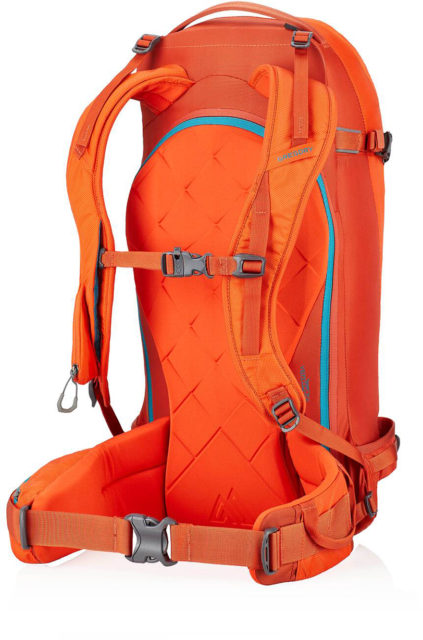
Below I’ll go into more detail on how the Targhee 32 feels while skiing, but the short story is the fit of this pack has been very secure and comfortable. It’s basically done what I want every pack to do — make me forget I’m wearing it.
The Targhee 32 doesn’t have a whole lot in the way of “suspension,” but what it does have is very effective. The support in this pack comes from what feels like a plastic sheet on the backpanel, but Gregory says the “frame” consists of “3mm Alloy Steel & 3mm Alloy anti-barreling stay & HDPE plastic.” Unlike most packs that have stays, I can’t feel any particular rod or individual piece supporting the “frame,” which I’d consider a good thing in terms of comfort and flexibility. Gregory calls this system “VertFlex” and the whole stiffened area is wrapped by the backpanel-access zipper; the rest of the pack is just unstructured fabric.
Coming from my favorite pack when it comes to load carrying, the Mystery Ranch Saddle Peak, I was worried about how the Targhee 32 would handle heavier loads and longer days. But I’ve been pleasantly surprised by how well its fairly minimal suspension system carries weight, and the supportive area is also quite flexible torsionally, which likely contributes to the comfort and fit of the pack.
It’s also worth noting that, while the Targhee 32 looks really tall in the stock photos above when it’s fully stuffed, when you’re wearing it (even with a pretty full load), the pack only extends a couple inches / ~7 cm above the top of the shoulder straps.
Materials
The Targhee 32 uses a lot of different materials throughout the pack. The areas that aren’t reinforced (which makes up much of the main pack body) are made from 210-denier nylon ripstop, the sides and bottom feature 630-denier nylon, and the lining is 135-denier polyester. There’s also a very burly 1000-denier strip of Cordura nylon on the face of the pack where your skis sit when using the diagonal ski carry. Overall, the fabric mix on this pack seems like a nice mix of light and burly enough. After a whole season of use, I haven’t managed to put any holes in it.
The outer part of the Targhee 32’s backpanel is covered in a dense foam with very subtle, diamond-shaped grooves in it, and the handle at the top is thick and burly but lays nice and flat when not in use. The backpanel foam does a good job of not letting snow stick to it, but like most snowsports packs, it’s not very breathable at all so it’s not ideal for hot weather (breathability wasn’t an issue in winter temperatures).
Weight & Comparisons
Looking at the feature list of the Targhee 32 — and the weight of the previous version — I expected it to be super heavy.
At a measured weight of 1262 grams for the size Medium, the revised Targhee 32 is notably heavier than some of the minimal, skimo-oriented packs out there, but it’s a lot lighter than the previous version and overall it seems like a reasonable weight for a fully featured, generalist ski pack.
For reference, here are our measured weights for some notable packs.
820 g — Mountain Equipment Tupilak 37L+
972 g — Patagonia Descensionist 40L
994 g — Arc’teryx Alpha SK 32
1262 g — Gregory Targhee 32 (19/20)
1392 g — Thule Upslope 35L
1436 g — Mystery Ranch Saddle Peak 25L
1638 g — Mystery Ranch Saddle Peak 21L
1720 g — Gregory Targhee 32L (previous version)
Storage
The vast majority of the Targhee 32’s 32 liters of stated volume is contained in its main compartment, which can only be accessed by its backpanel zipper. But that backpanel access is pretty huge — the zipper measures 44×27 cm (17×11”) at its widest points, with it narrowing to 22 cm (~9”) at the base of the pack.
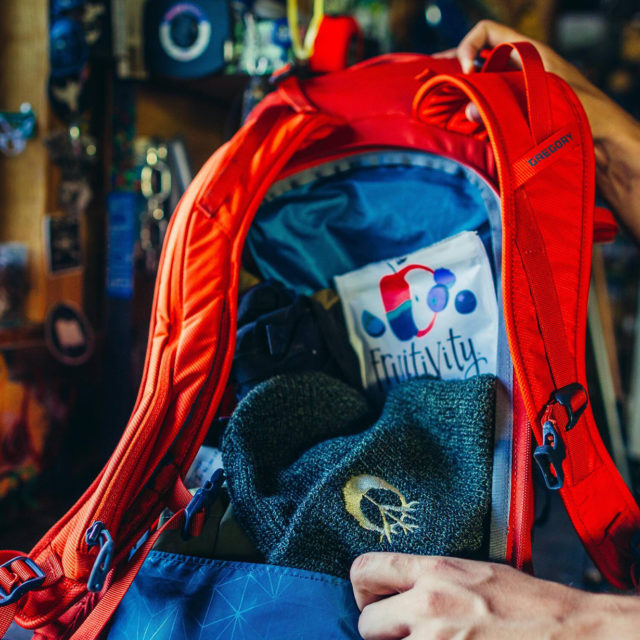
I’m a fan of most backpanel-access ski packs, particularly ones with very large openings like the Targhee 32. I can very easily access all of the main compartment through that zipper, and doing so is quick and easy. That wide, easy access compartment is also why I like the Targhee 32 as a camera pack since I can slot a padded camera cube in there (I use Peak Design’s “Small” camera cube) and have quick access to my camera without having to wrestle it out of a side zip or small top zip.
One other thing I like about the Targhee 32’s main compartment is that it has an 11 cm / 4.5” sleeve at the bottom which helps prevent all my stuff from tumbling out of the bottom when I fully open the backpanel. This is a very simple, minimal solution to a problem I’ve had with numerous other backpanel-access packs.
The Targhee 32 also has a few other organizational pockets. It’s got a separate, exterior pocket for avalanche tools with two sleeves for your probe and shovel handle. I like separate avalanche pockets, and the U-shaped zipper on the Targhee 32’s avy pocket extends about halfway around the pack which makes it easy to quickly rip open. I can easily fit my BCA Stealth 270 probe, B-1 EXT shovel, and a pair of skins cut for a 188cm-long, 110mm-wide ski in that pocket.
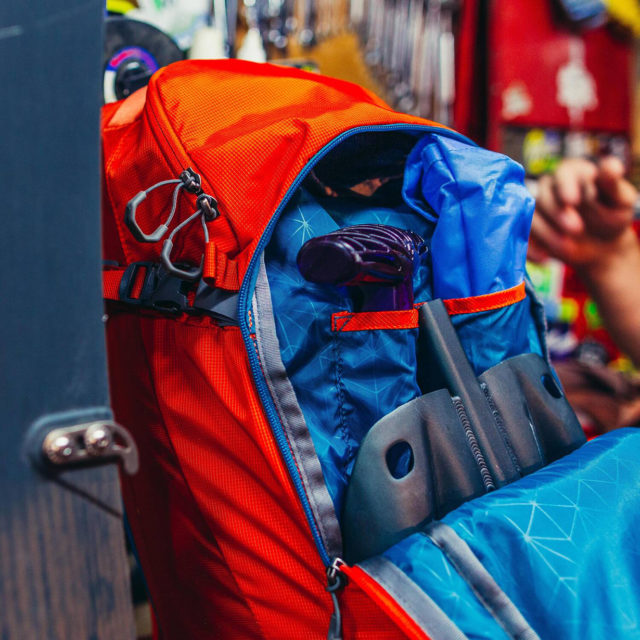
On the top of the pack there’s a large (roughly 34 cm / 13”) accessory pocket that’s nice for goggles, tools, snacks, etc., and it also has a key clip.
Lastly, there’s a small pocket on the right side of the hip belt that can fit some of my sunglasses and / or a ski strap, lip balm, slope-angle meter, etc.
All of the pockets on the Targhee 32 have really big, stiff zipper pulls that have been super easy to grab with a variety of gloves and mittens. And it’s worth noting that the Targhee 32’s stated volume of 32 liters feels accurate — compared to other “32-liter” packs, the Targhee 32 feels like it lets you use every bit of those 32 liters of volume.
Features
There are a lot of them.
The Targhee 32 has just about every feature I could ever need on a snowsports pack. It’ll let you carry skis A-frame style, just like the cabins in all of your favorite Instagram influencer’s pictures, or you can sling them diagonally like … well, I don’t have a stupid analogy for that one. The diagonal ski carry also functions as a vertical snowboard carry. (Below I’ll go into more detail on the performance of the carry options).
There are simple alloy toggles / bars at the bottom of the pack that you can slot into the heads of ice tools and you can secure the handle of the tools up top with some elastic cinch cords. You can conceal those metal bars into the sleeve where you can also cover the picks of your tools, but I haven’t bothered since the toggles are very low profile to begin with. This system is similar overall to most ice-tool systems on most packs, and I’m a big fan.
The Targhee 32 has a simple helmet-carry system that can be fully stowed in a zippered pocket on the face of the pack. The helmet carry is pretty straightforward with a simple mesh fabric and hooks that you secure onto loops on the face of the pack. So far, the helmet carry has worked great, and has also worked great at staying out of the way when not in use.
On the inside of the backpanel is a sleeve to hold a hydration reservoir, and on the right shoulder strap there’s an insulated sleeve for your hydration tube. I don’t use hydration reservoirs for skiing, but nothing about the Targhee 32’s hydration system seems odd to me.
The Targhee 32 has two compression straps on each side of the pack, which contribute to one of my only complaints about the pack. The bottom compression straps are reinforced as you see on many ski packs (to deal with rubbing of ski edges / bindings), while the top ones have little strips of synthetic “fabric” near each buckle to add low-bulk reinforcement. The lower straps have no buckles, while the upper straps have a buckle with a “locking” tensioner to prevent them from accidentally loosening. They do a great job of this, though they don’t do a great job of loosening when you want them to (it takes a good bit of effort to “unlock” them, and the tab you use to do so is pretty difficult to pop open with gloves). The buckles up top also have a bit of velcro that you can use to shorten the extra strap length and keep it from hitting you in the face.
My main complaint with the compression system is that the straps don’t let you compress the pack a whole lot. If you have the upper compression straps as tight as possible, you can get the main body of the pack down to 12 cm / 5” in depth. Sure, that’s not excessively bulky, but those straps also don’t compress the avy tool compartment, so the Targhee 32’s minimum depth is larger than most ski packs I’ve used.
To be clear, this is rarely an issue for me in the backcountry as I’m usually carrying too much stuff to fully cinch down the pack anyway. But for days in the resort or quick laps when I’ve got a light pack, I would prefer to be able to cinch it smaller.
All that said, this is a minor complaint in the grand scheme of things and I doubt most people will care, especially if you’re primarily using the Targhee 32 for full days in the backcountry.
General Performance
Alright, I’ve now spewed 1700+ words about this thing, but how does it actually work? In short, quite well.
As I noted above, I really like how this pack carries weight. It’s not as supportive as the class-leading Mystery Ranch Saddle Peak, but it’s not super far off and the only times I really notice this difference are during summer-ski missions where I’ve got my skis + boots on my back for extended periods of time. For any day trips during the winter and spring, I haven’t found myself complaining about my back or hips hurting while wearing the Targhee 32. For me, that’s pretty rare and very impressive. This pack’s minimal-seeming suspension system does a very good job, its hip belt is pretty good at evenly distributing weight, and overall it carries weight very well for a ski pack.
When it comes time to boot up and throw skis on my pack, the Targhee 32 is pretty good. For diagonal carry, I’d say it’s neither exceptionally great or bad. The Saddle Peak, with its extra cinch-strap up top and massive loop on the face, is still my favorite diagonal-carry pack since it does such a good job of securing skis and keeping the tails away from my legs. But the Targhee 32’s diagonal carry is on par with just about every other ski pack I’ve used.
The Targhee 32 might be a bit better than average when it comes to A-frame carry. On many packs, especially lower-volume ones or those that are a bit skinnier width-wise, I find myself scratching my calves with my skis’ tails, even when I cinch the ski tips tight with a strap in an effort to spread out the tails. This can go from minor annoyance to insanity-causing problem when I’m carrying my skis on my pack for 10+ miles during the summer.
So far, I haven’t had this issue with the Targhee 32. Even without a ton of gear inside, it seems to do a good job of not folding in and letting my ski tails get too close together. And, FWIW, I’ve used skis that are as wide as 135 mm at the tails with no issue (measuring the pack, you should be able to fit up to a ~145mm-wide tail through the bottom compression straps).
On the descent, the Targhee 32 has done a surprisingly good job of making me forget I’m wearing it. The Saddle Peak is still my favorite in this regard, but that’s also a much smaller pack at 25L. Of all the ~32-liter packs I’ve used, the Targhee 32 is very close to the top in terms of how stable and comfortable it feels while skiing.
The only times I really notice the Targhee 32 are when it lifts up during airs, where I think the ability to further compress the pack would be helpful. But for a 32-liter pack, complaining that it bounces when you jump is bordering on an unfair complaint in my experience.
Camera Carry
Just about every time I’m in the backcountry and any time we need to take pictures in the resort at Crested Butte, I bring my Olympus OM-D E-M1 Mark II camera body and an Olympus M.Zuiko ED 12-40mm F2.8 Pro lens (those names just roll off the tongue, don’t they?). The M1 is a mirrorless camera that’s pretty small compared to most DSLRs, and the 12-40mm lens is about 10 cm long when stowed. Despite this relatively compact setup, it’s still a bit of a pain to try to quickly get out of most backpack zippers.
As I mentioned above, I’ve been using the Targhee 32 with a size Small Peak Design Camera Cube. While this camera cube is still much too big for my camera setup, it leaves plenty of room in the main compartment of the pack and I can still fit all of my backcountry essentials around it. The best part is that it’s super quick and easy to rip open the backpack, rip open the camera cube zipper, and get shooting. This is especially nice when you ski with people who don’t care about waiting for pictures and who will very quickly leave you behind.
Given the size of the backpanel zipper and main compartment, I think you’d be able to fit camera cubes / inserts for much larger camera bodies and / or more lenses. Given this and how well the Targhee 32 performs as a regular ski pack, it’s become my favorite option for both getting shots and not hating myself when carrying stuff on the up or down.
[Unrelated rant: can someone please make some decent camera cubes / padded cases for small mirrorless setups with a single lens? Peak Design’s smallest cube still leaves me with tons of extra room, and in turn, takes up more room than necessary inside my pack. Or, if you know of a really compact option, please let me know.]
Durability
After a full season of use, I have nothing bad to report here. Everything on the Targhee 32 is functioning as it did when I got it, and I haven’t been able to tear or puncture any of the fabric. As always, I’ll report back if I run into issues as I keep using the pack (which I plan on doing a lot over the next few seasons).
Who’s It For?
I’d recommend the Targhee 32 to just about any skier or snowboarder looking for a do-it-all pack in the ~32-liter category.
Those who are cutting their toothbrush in half, or more realistically, who just prefer a lighter, cleaner, more minimal pack should look elsewhere. If you’re happy ditching features in exchange for less weight and less stuff flapping around, many companies are now making packs for you.
And if you’re mostly looking for a resort or sidecountry pack, you could get away with a smaller pack that’ll be less bulky and will feel a bit more secure on the descent. Gregory makes a 26-liter version of the Targhee that’d be better for this scenario, and the Mystery Ranch Saddle Peak is another great option.
But for those who need a ski / snowboard pack that can hold enough gear for nearly any day trip in the backcountry, keep it easily accessible, and that doesn’t suck when you actually get to do the fun part of a day in the backcountry, the Targhee 32 warrants strong consideration. It’s got all the features most people will ever need, it carries weight (and equipment on the outside) quite well, and it feels comfortable and secure on the descent.
The Targhee 32 also works pretty well in the resort if you don’t want to buy separate packs for inbounds / backcountry use, and it’s a very appealing option for photographers who want a camera pack (when used with a camera insert / cube) that keeps things pretty easily accessible but that doesn’t suck at being a ski / snowboard pack.
Bottom Line
The Gregory Targhee 32 has done just about everything I want a ski / snowboard pack to do. It carries heavier loads quite well, it does the same for skis attached on the outside, it lets me get to all my stuff quickly and easily, and it mostly makes me forget I’m wearing it when my skis turn downhill. The fact that it also works pretty well with camera gear is just an added bonus. If you’re looking for a one-pack quiver for snowsports, the Targhee 32 offers a lot to like.

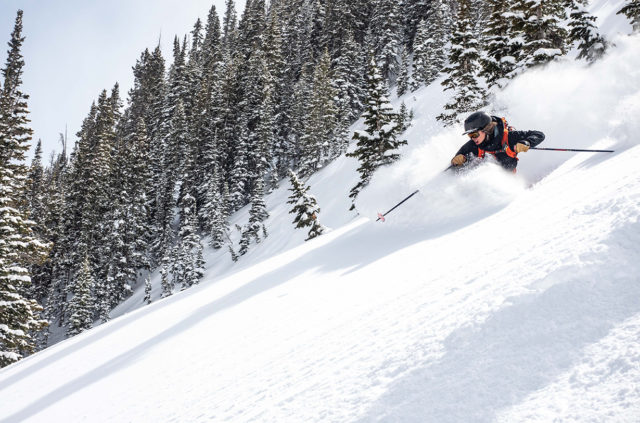
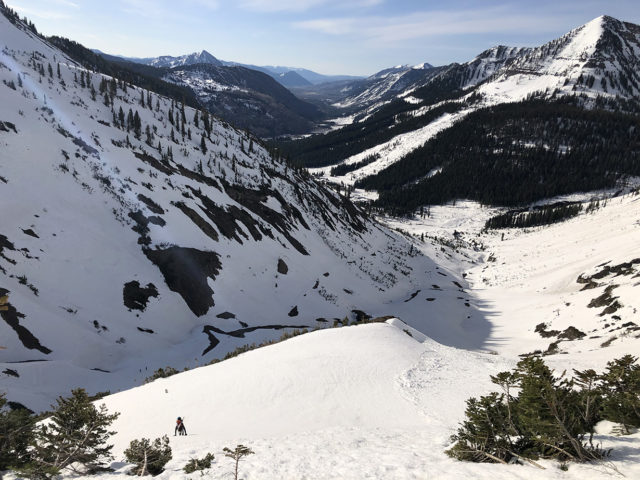
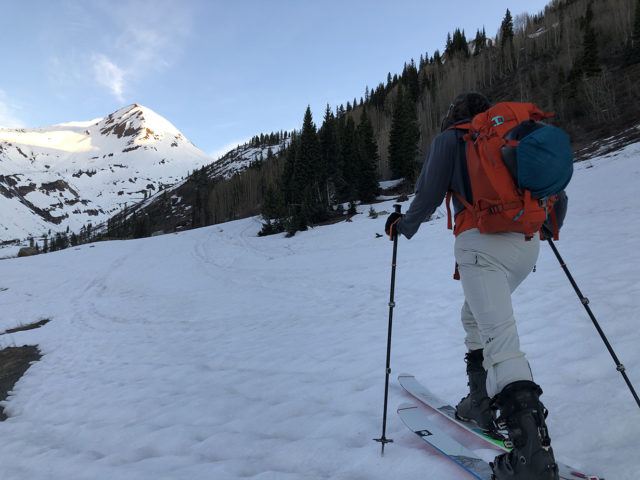
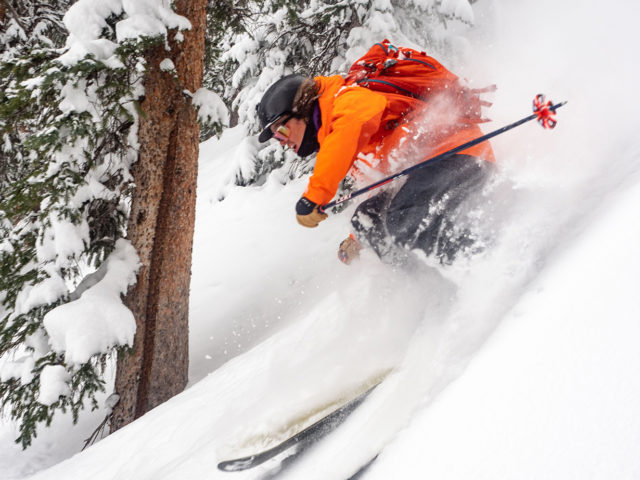
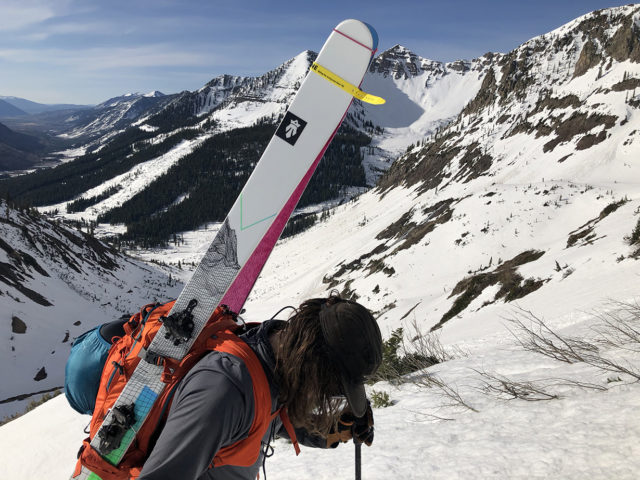
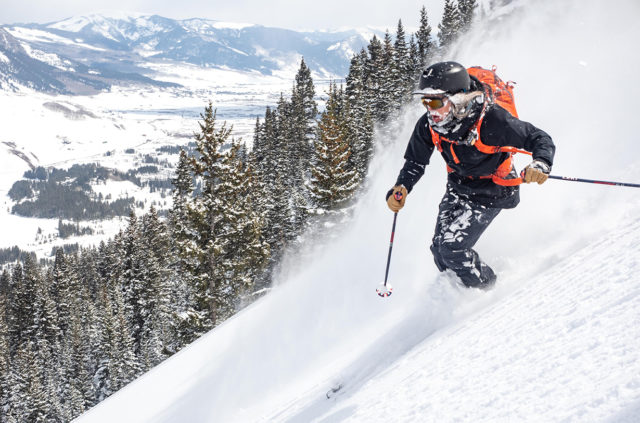
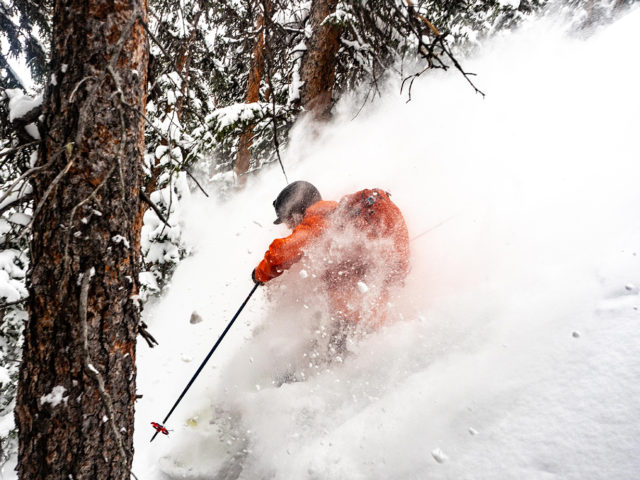
An anti-barreling stay would run across the back rather than down as in a conventional internal-frame pack. The logical place to put it would be across the back of the HDPE sheet (facing the pack’s contents) at the level of the small of the back.
Wherever it is, I can’t seem to pinpoint the location by feel — it mostly feels like a consistent sheet. If the pack ever catastrophically falls apart, it’d be fun to dissect it.
About your camera cube problems, I have a simple, two-word fix: Full frame.
This comment brought to you by the same “uniquely male” drive that causes some people to always buy the longest version of a ski.
I have had two versions of the Targhee 26 which is fairly similar in most all respects to the 32 other than being a bit smaller.
For the most part a very good ski pack. The one issue is durability when used to carry skis in A frame configuration. The side panels are not reinforced and my first pack (the older version) developed holes where ski edges made contact. Gregory replaced it with the newer version (essentially similar to the pack reviewed here) and in one season the same spots are showing significant abrasion. Seems to be a fatal flaw in this pack line that could be fixed with more durable fabric on the sides panels.
Great review Luke, don’t worry about spewing words, good to get the insight on the features etc. Re your camera problem my go to has always been Camera Care Systems but seems the owners have retired! Obvious place to look would be Lowepro but am guessing you already have
Thanks for the review. I’m thinking of this or the Targhee 26 as an alternative to an F-Stop Guru UL photo backpack, for photo use. I haven’t tried it, but would an F-Stop camera cube – they call it an ICU (internal camer unit) – be an idea? The come in various sizes. It’s something I hope to check out soon. I have a Gregory Z38, which is very comfortable. The F-Stop is okay around town, but not good enough for hiking. However, it’s a rear-loader, which I do like, which led me to this. A better, more comfortable bag I can adapt to photo use. I hope.
While I haven’t tried them myself, their ICU’s could potentially work. It looks like the larger ones are the same exact stated width as the Targhee 26 and 32, so I’m not sure if they’d fit, but it seems like the size Small ICU would work just fine. The bigger ones could potentially work, but I imagine it’d be a very tight fit.
If your looking for a smaller camera cube, you can look into the Tenba BYOB series. There are small options there. Great review! Thank you!
I’ll second Leo’s Tenba BYOB recommendation. I use the BYOB 10 to carry the same camera/lens setup you use with a few other lenses. The BYOB 7 might meet your needs if you are looking for space for just that camera and spare lens and batteries. I believe it is substantial smaller than the Peak Designs small cube.
Great review. Have you had a chance to try the Gregory Targhee FT 35? It has this setup allowing you to put your skis on your pack without taking off your pack. It would be great to hear if this is the future or a gimmick. Thanks
Not yet, but our reviewer Sam should be testing that pack later this season. Definitely curious about that ski-attachment system.
Have you measured bottom loop for A-Frame carry? is the loop wide enough able to carry powder skis ? in my case BC 120/192 tail width of 135MM. if not any recommendation for a durable pack for daytours?
Appreciate your comment